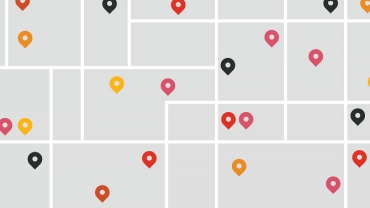
'Lifestyle monitoring' for elderly care
Around 74% of people with dementia live at home receiving some form of support from an informal care provider and around 26% of people with dementia live alone at home1. While this is not necessarily an issue and might actually be the preferred option for most clients with dementia, this situation becomes challenging for those clients with a more severe need for care or support. As a consequence of the lack of resident caregivers or informal care providers in the house, the deployment of more intensive care or admission to a nursing home is more likely to be addressed by this group of people. In addition, it is difficult to deliver safe, tailored and responsible care to this group of clients at home in a timely and safe manner, because the insight into the situation of these clients and supervision of their well-being is limited due to the lack of informal care givers in the house.

Background
ZZG Zorggroep, a Dutch care organisation with a wide variety of clients and a focus on contributing sustainably to people's health and quality of life, acknowledges the importance of independence for clients with dementia, particularly in the home care environment. ZZG Zorggroep works closely with other healthcare providers, such as general practitioners, nursing homes, municipalities and hospitals. To ensure the safety of this client group, ZZG Zorggroep collaborated with PwC to generate (financial) evidence for the added value of a solution that was ultimately called lifestyle monitoring (in Dutch: 'leefstijlmonitoring'). This solution is aimed at helping informal caregivers and care professionals to identify problems early on for clients with dementia, to deploy the right type of care at the right moment in time and to continue to live safely in a responsible manner at home.

Initiative 'Leefstijlmonitoring'
The idea was simple, yet very effective in ensuring the safety of clients with dementia in the home environment. It involved monitoring the lifestyles of clients at home, in order to learn more about their lives and movements. By placing movement sensors in the home of clients with dementia, the movement pattern in the home can be recorded. For effective monitoring, five to seven sensors are installed, near doors, refrigerator, microwave along with several motion sensors. This allows caregivers to have better insights into the lifestyle and movement patterns of clients – what is their day-night rhythm, how often do they visit the toilet (at night), how active are they indoors? Once such movement patterns are analysed with the help of smart algorithms, caregivers can detect abnormalities in movement patterns earlier, understand deviations in those patterns better and take action when necessary. For example, if a client suddenly goes to the toilet five times a night, the client may have an incipient blatter infection and might be in need of extra medicate, care or support. Another example, in case the refrigerator has not been opened for a whole day, informal care givers or nursing might need to be informed. In such situations lifestyle monitoring does not only help in building the confidence of (informal) caregivers, but also helps them understand which situations can be considered stable and where intervention is necessary. Moreover, lifestyle monitoring is of added value in decreasing the feelings of stress of informal caregivers, which prolongs the time (informal) caregivers are comfortable caring for their loved ones. Also, the deployment of the sensors enables ZZG Zorgroep to deliver safe, tailored and responsible care to this group of clients at home in a timely manner.
The business case developed for this initiative in combination with the real-life results generated evidence for scale up of the initiative. As a result, more than 290 clients have participated in lifestyle monitoring since2. The ultimate aim is to apply lifestyle monitoring to a larger client group, expand the possibilities of delivering remote healthcare and to deliver the right type of care at the right moment. Also new developments have been added to the pipeline of development of this initiative, such as forwarding alarms directly to the electronic client file, integration with social alarms and the possibility to detect wandering.
Implementation of lifestyle monitoring showed the necessity of generating data insights to measure impact and showed the added value of data as a guide decision making – step 3
Anno 2021, the trial phase of this initiative has been amply completed, which means that the project phase has come to an end. Thereby, lifestyle monitoring is included as an official element of the healthcare procurement by health insurance companies package purchased by the health insurers. This entails sufficient opportunities to optimally utilize the full potential of lifestyle monitoring now and in the future. For now at least one thing is certain: lifestyle monitoring is a promising technology as it helps improve the quality of life of clients with dementia and their informal care providers, while lowering healthcare costs by reducing the number of hours of home care required per week, (partly) preventing unnecessary travel time of the home care provider and because the admission of clients to the nursing home can be postponed by up to 9 weeks. As a result of these positive results, various healthcare organisations in the Netherlands are now experimenting with the possibilities of this initiative. Moreover, the recent pandemic of COVID-19 revealed the potential of these kind of digital solutions as alternative ways to monitor clients at a safe distance.
2Naturally after informed consent from the client and/or informal care giver was provided because of privacy considerations.
Contact us




















